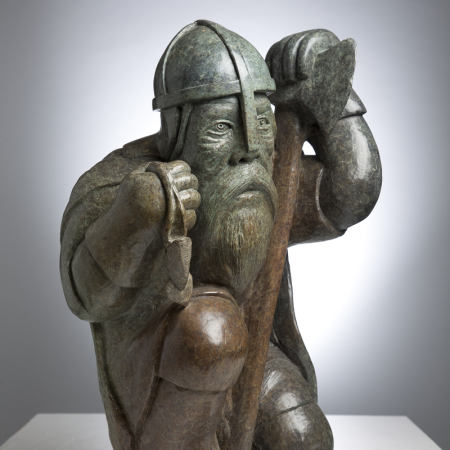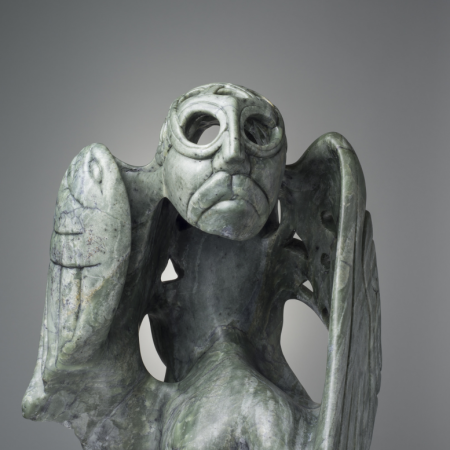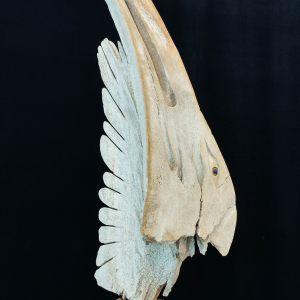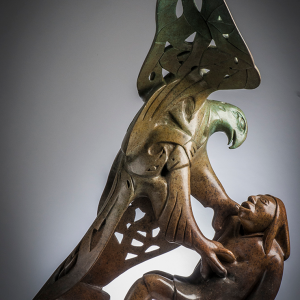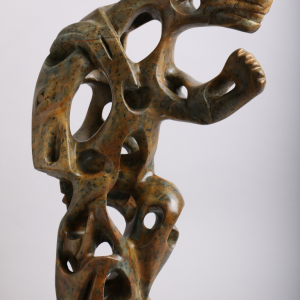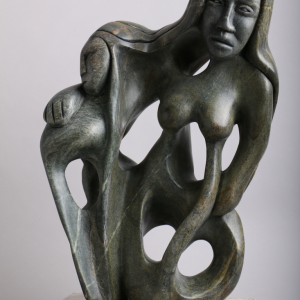Abraham Anghik Ruben
Ruben was born on November 26, 1951, at his family’s winter camp, which was located at the old Catholic coal mine, about 35 miles southeast of Paulatuk. Until 1959, Ruben lived the traditional semi-nomadic Inuvialuit lifestyle with a “small band of 10-15 families.” They moved among seasonal fishing and hunting camps, and most of their diet consisted of caribou, moose, muskox, game birds, waterfowl, and sea mammals. In 1959, Ruben, then 8, his siblings, and cousins were sent to the residential school, Grollier Hall, in Inuvik. He lived there for the next eleven years, until 1970
In the summer of 1971 Ruben began his formal studies in art under the guidance of Ronald (Ron) Senungetuk, an Iñupiaq artist and art educator, who was head of the Native Arts Centre at the University of Alaska Fairbanks. At the university’s Centre he “developed the understanding of how to combine traditional material and techniques with the contemporaneous interpretations of many myths and legends.” Ruben returned for a full year to study under Senungetuk from the summer of 1974 to the summer of 1975. Ruben pursued his artistic career over the next ten years.
In 1989 Darlene Coward Wight, curator of Inuit art at the Winnipeg Art Gallery and a leading Inuit art scholar, curated “Out of Tradition” an exhibition by Abraham Anghik and his brother David Ruben Piqtoukun. She accompanied a “scaled-down version” of the exhibition across Canada’s north for months.
Ruben works with a wide variety of materials including stone and bronze. His art work reflects and honours the traditional teachings of his Inuvialuit family and friends.
After surviving cancer in late 2004, Ruben’s sculpture reflected his interest in the Inuit/Norse Viking “contact period from the early 900s to the 1400s” long before Europeans arrived in North America. In his biography, Ruben described how he was partly inspired by the story of his maternal aunt, Paniabuluk, who became the Inuk wife of Arctic explorer Vilhjalmur Stefansson and who assisted him on many of his expeditions. In the early 20th century other Nordic visitors overwintered in Ruben’s ancestral lands. Since then, Ruben has researched the “cultures of the circumpolar world, including those of Siberia, Scandinavia, Greenland and Iceland” and found resonance between Inuit narratives and myths which is expressed through his art.

